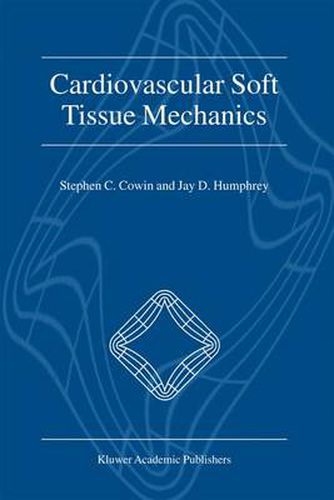Readings Newsletter
Become a Readings Member to make your shopping experience even easier.
Sign in or sign up for free!
You’re not far away from qualifying for FREE standard shipping within Australia
You’ve qualified for FREE standard shipping within Australia
The cart is loading…






This title is printed to order. This book may have been self-published. If so, we cannot guarantee the quality of the content. In the main most books will have gone through the editing process however some may not. We therefore suggest that you be aware of this before ordering this book. If in doubt check either the author or publisher’s details as we are unable to accept any returns unless they are faulty. Please contact us if you have any questions.
The seven papers of this volume present a glimpse into contemporary research on soft tissue mechanics as well as some future directions. The articles concern tissues within the cardiovascular system: three focus on arteries, three on the heart, and one on biaxial testing of planar tissues such as heart valves. Given that cardiovascular disease continues to be the leading cause of death in the developed world, the importance of such research is clear. There are notable common features of the seven papers. First, most of the proposed constitutive relations are motivated directly by data on the underlying microstructure, and especially the orientations of a structurally important protein (collagen) that forms as undulated cross-linked fibres. Another feature of most of the papers is the consideration of the fact that both arteries and the heart contain muscle and that there is a need to quantify the so-called active (contractile) response in addition to the passive (non-contractile) response. Such relations must not only be structurally motivated, they must ultimately include the kinetics of calcium transport in the muscle. Constitutive relations for active behaviour are discussed in the majority of the papers along with the growth and remodeling of cardiovascular tissues. Over the last 20 years of the 20th century, separate advances in biochemistry, cell biology, genetic engineering, and biomechanics have focused attention on the ubiquitous role of growth and remodelling of tissues. This volume should be of interest to cardiovascular researchers in particular, and to bioengineers and biomechanics soft tissue researchers in general.
$9.00 standard shipping within Australia
FREE standard shipping within Australia for orders over $100.00
Express & International shipping calculated at checkout
This title is printed to order. This book may have been self-published. If so, we cannot guarantee the quality of the content. In the main most books will have gone through the editing process however some may not. We therefore suggest that you be aware of this before ordering this book. If in doubt check either the author or publisher’s details as we are unable to accept any returns unless they are faulty. Please contact us if you have any questions.
The seven papers of this volume present a glimpse into contemporary research on soft tissue mechanics as well as some future directions. The articles concern tissues within the cardiovascular system: three focus on arteries, three on the heart, and one on biaxial testing of planar tissues such as heart valves. Given that cardiovascular disease continues to be the leading cause of death in the developed world, the importance of such research is clear. There are notable common features of the seven papers. First, most of the proposed constitutive relations are motivated directly by data on the underlying microstructure, and especially the orientations of a structurally important protein (collagen) that forms as undulated cross-linked fibres. Another feature of most of the papers is the consideration of the fact that both arteries and the heart contain muscle and that there is a need to quantify the so-called active (contractile) response in addition to the passive (non-contractile) response. Such relations must not only be structurally motivated, they must ultimately include the kinetics of calcium transport in the muscle. Constitutive relations for active behaviour are discussed in the majority of the papers along with the growth and remodeling of cardiovascular tissues. Over the last 20 years of the 20th century, separate advances in biochemistry, cell biology, genetic engineering, and biomechanics have focused attention on the ubiquitous role of growth and remodelling of tissues. This volume should be of interest to cardiovascular researchers in particular, and to bioengineers and biomechanics soft tissue researchers in general.